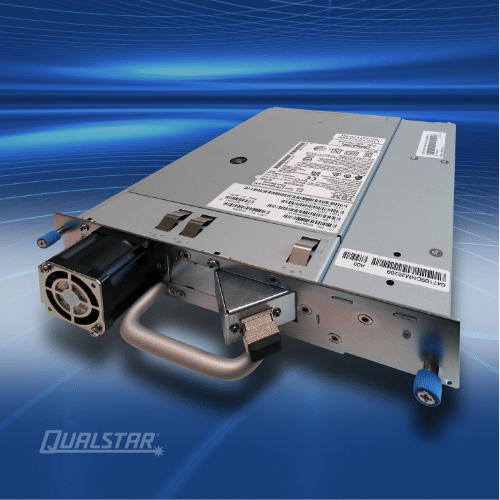In the modern data landscape, organisations face a relentless growth of information, which calls for efficient, scalable backup and storage solutions. Among the various tools available, an autoloader provides a streamlined and automated way to handle data backups while minimising human intervention. Often considered a middle ground between single tape drives and more complex tape libraries, an autoloader offers a robust solution for companies looking to enhance their data storage strategy without the need for large-scale systems.
This editorial delves into the core functionality of an autoloader, its primary benefits, and why it can be the right choice for businesses looking to upgrade their data protection strategy.
There are several reasons why tape drives remain a popular choice, despite the availability of newer technologies. Here are the key benefits that continue to make them relevant:
Cost-Effectiveness: One of the most significant advantages of using a tape drive is its affordability. When compared to disk-based storage or cloud storage, tape is far more economical, especially for long-term storage of large amounts of data. The low upfront cost and lower operational costs make it an ideal choice for businesses that need to store vast amounts of data without breaking the bank.
Scalability: Offers scalability that is often unmatched by other storage devices. Organisations can easily add more tapes to their library as their storage needs grow, without significant changes to their infrastructure. Tape’s scalability allows businesses to keep up with the exponential growth of data while maintaining a cost-effective storage solution.
Durability and Longevity: Tapes are known for their durability, with proper handling and storage enabling them to last for decades. This long lifespan makes them an excellent option for archival purposes, where businesses need to store data for many years. Additionally, tapes can be stored offline in secure, climate-controlled environments, protecting them from damage caused by environmental factors.
Energy Efficiency: Consume less power than disk-based storage systems, which often need to be running continuously. Tape storage only uses power when data is being written to or read from the tape, making it a more energy-efficient solution.
Data Security: Security is a major concern in today's data-driven world. It provide built-in encryption options, ensuring that sensitive data is securely stored. Additionally, the offline nature of tape storage makes it less vulnerable to cyber threats, such as ransomware, compared to cloud or disk-based storage.

At its core, its a device used to read from and write to magnetic tape, a medium that has been used for storing data since the 1950s. While the primary function of a tape drive is to provide storage, it is distinct from other storage methods due to its unique characteristics. It works by accessing and writing data to a magnetic tape cartridge, which is typically housed in a tape library or an autoloader for easy access.
It can support different tape formats, such as Linear Tape-Open (LTO), DLT, or DAT, and each type offers varying capacities, speeds, and compatibility. The most common today are based on the LTO format, which is popular due to its scalability, speed, and cost-efficiency.
Despite the rise of cloud storage, SSDs, and other high-tech storage solutions, businesses continue to rely on their backup and archival needs. The primary reasons are tape’s low cost, high capacity, and longevity.
For businesses dealing with massive amounts of data, provide a practical and affordable way to back up and secure that data. Tape is ideal for long-term archiving where access speed is less critical but data preservation and security are paramount.
Additionally, the rise of LTO (Linear Tape-Open) technology, particularly with the advancements in the LTO-9 generation, has further reinforced the relevance of tape drives. With massive storage capacities and faster transfer rates, the latest LTO generations make tape a viable and future-proof solution for businesses.
Although modern storage solutions like SSDs and hard drives offer faster access times, a tape drive plays a vital role in an organisation's overall data management strategy. Typically used for data backup and archiving, providing long-term storage for vast amounts of data that don't need to be accessed frequently.
One of the key advantages is their ability to store large volumes of data in a compact form. For instance, a single LTO-8 tape cartridge can store up to 12 terabytes of data, and with compression, this can go up to 30 terabytes, offering an impressive capacity for archival purposes.
In addition to archiving, tape drives are used for disaster recovery. When a business needs to recover from a system failure or a cyberattack, data stored on tape can often be retrieved more reliably than from other media. This is especially true when using a combination with an air-gapped environment, which isolates the data from networks to prevent cyber threats.
A tape drive uses a combination of mechanical components and magnetic technology to store and retrieve data. When data is written to a tape, it is encoded onto the magnetic media in a sequential manner. This sequential writing method is what differentiates a from other storage technologies like hard drives and SSDs, which allow for random access to data.
The mechanical components include a motor that moves the tape across the read/write head, and a robotic arm that assists in loading and unloading the tape when used in a tape library or autoloader setup. Once the tape is positioned, data is written by the drive’s read/write head, using magnetic fields to record data in the form of binary code.
While new data storage solutions continue to emerge, remain an integral part of an organisation’s data protection strategy. Their cost-effectiveness, scalability, durability, and energy efficiency make them an invaluable tool for businesses of all sizes. As the need for secure, long-term data storage grows, the humble will continue to serve as a reliable and effective solution for backup, archiving, and disaster recovery.
Smarter, strategic thinking.

Keep me up-to-date with news and announcements regarding LTO Ultrium Tape.
I consent to the Privacy Policy.